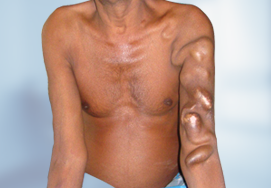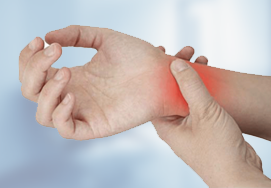Tendon Repairs And Tendon Transfers
Tendon repairs are indicated if you have rheumatoid arthritis (inflammation of the joints) and you have tendon injury that results from playing contact sports.
Tendon transfer surgery is indicated if you have paralysis of healthy muscles due to loss of innervations and you have peripheral nerve injury that has no potential to improve

- What is a Tendon?
- What is tendon repair and tendon transfer?
- What are the types of the surgeries?
-
Which are the indications for tendon repairs /
tendon transfers - How should I prepare for the surgery?
- What will happen during the surgery?
- What is the aftercare of the surgery?
-
What are the postsurgical complications for
tendon repairs and tendon transfers?
What is a Tendon?
Tendon is the fibrous tissue which attaches muscle to bone and helps in the movement of the joint. So when there is injury to the tendon. There is loss of movement or activity particular to that tendon.
Tendon injuries may occur when a cut goes past the skin and through the tendon. Which occur either due to sharp objects. Tendon injuries occur in self-inflicted injuries, assault with sharp objects, road traffic accidents, Industrial accidents, household accidents.
What is tendon repair and tendon transfer?
Tendon repair is a surgical technique that repairs the divided or torn tendons and aims to restore the normal function and mobility of the joints after a tendon laceration.
Tendon transfer is a surgical procedure by which a tendon and it’s muscle (muscle-tendon unit) is moved from one location to another. The muscle-tendon unit is transferred in order to substitute the lost function (movement and stability) when there is a nerve injury or when there is loss of muscle – tendon unit due to injury.
What are the types of the surgeries?
Tendon repairs
The tendons tear in different ways, such as straight across, at an angle or pulled off the bone. There are many methods for your surgeon to repair them. However, in all the methods special sutures are placed.
Tendon Grafts: Tendon grafting is done when the tendon injury is severe, when the patient has presented late and there is a significant gap, which requires to be bridged. Then tendons grafts are taken from the donor sites such as foot or other body parts and are placed at the site of injured tendon.
Tendon transfers: Tendon transfer is a surgical procedure by which a tendon and it’s muscle (muscle-tendon unit) is moved from one location to another in order to substitute the lost function (movement and stability) .
Which are the indications for tendon repairs / tendon transfers
Tendon repairs
Tendon repair is indicated if:
- You have rheumatoid arthritis (inflammation of the joints), as it involves the tendons and causes rupture
- You have tendon injury that results from playing contact sports. The elbow, knee and ankle joints are commonly affected parts.
- Trauma – Self inflicted and acquired
Tendon transfers
The tendon transfer surgery is indicated if:
- You have paralysis of healthy muscles due to loss of innervation(nerve injury)
- You have peripheral nerve injury that has no potential to improve
- You have nerve injuries that are physically irreparable like root avulsions, nerve injuries that did not recover with grafting
- You have failed nerve transfers
- if the muscle reinnervation is impossible due to motor end-plate fibrosis.
How should I prepare for the surgery?
All acute tendon injuries are repaired on emergency basis. So, no special preparation is required and all workup is done in the day care. So the blood work , radiographs and anaesthesia are all immediately done on arrival and once reports arrive you can go ahead with your surgical exploration and repair
Tendon transfer
Here the surgery is an elective one .
- Discuss with your surgeon regarding the use of medications for other health conditions.
- You must stop taking aspirin or other or other over the counter drugs as they may cause bleeding complications during and after the surgery.
- If you have splint or cast, it will be removed before the surgery.
- You should avoid eating and drinking 8 to 12 hours before the surgery. This is to avoid complications related to anesthesia.
What will happen during the surgery?
Tendon repairs
After anesthesia is given, the tendon is explored and the proximal and distal ends of tendons are identified. Then tendon repair is done under magnification with gentle handling and precision repair.
But, if the tendon is severely injured resulting in loss of tendon segment, then a tendon graft may be placed to replace the piece of damaged tendon. (a piece of tendon is taken from foot or other body parts and is used to repair the damaged tendon). In some instances, the tendons are reattached to the surrounding tissue.
In all cases of tendon injury, the surrounding tissue is properly assessed to look for any additional injuries to the blood vessels or nerves. If any other injuries are found during surgery then they are also repaired. Then the surgeon closes the incision with sterile bandages and places a splint for fast recovery.
Tendon transfers
During the tendon transfer surgery, the origin of the muscle, the nerve supply and the blood supply to the muscle is left in place. The tendon attachment onto the bone is detached and sewn into a different place. It is sewn into a different bone or a different tendon using sutures. The soft tissues are then closed and your surgeon places a splint. After the attachment is being moved, the muscle produces a different action depending on the place it has been inserted.
What is the aftercare of the surgery?
After Tendon repairs
The healing from 8 to 12 weeks and you may be able to regain the movement of the joint gradually. For effective and fast recovery, you should:
- Keep the injured limb elevated for few days after the surgery to reduce swelling and pain.
- Keep the operated site clean and dry. Cover the cast or splint with plastic while bathing.
- Take the medications as directed by your surgeon. If you are taking antibiotics, complete the course to avoid drug resistance.
- Wear a brace that helps for easy movement of the finger or hand.
- Undergo physical therapy to return the movement in a safe manner as told by your surgeon.
After Tendon transfers
The splint is in place for at least a month. After the surgery, you should:
- Avoid weight on the surgical site for at least 6 weeks to allow fast recovery and healing.
- Undergo physical therapy to regain the strength of the transferred muscle.
- Avoid mobilization of surgical site immediately after the surgery as it may lead to the rupture of tendon that is transferred. At the same time, avoid frequent movement of the surgical sight even after complete healing as it may cause scarring of the tendon with stiffness.
What are the postsurgical complications for tendon repairs and tendon transfers?
Complications following tendon repairs are few but can happen
- Rupture of repaired tendon due to non – compliance by the patient
- Bleeding and infection at the surgical site
- Tendon adhesion which will require tenolysis
- Decreased excursion of the tendon causing joint stiffness














